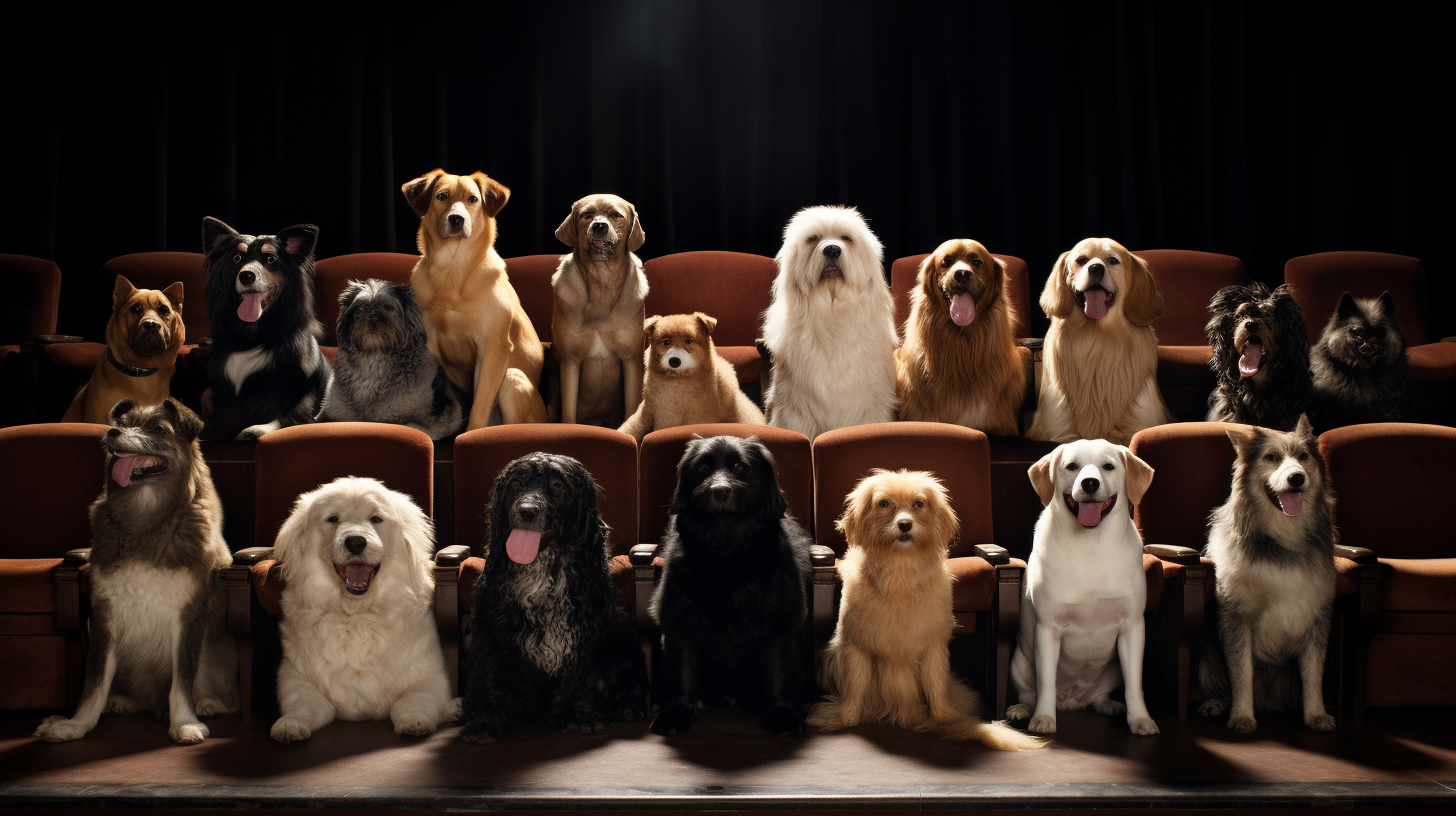The lights dim, the screen illuminates, and the pack settles in for a journey through Houndwood’s rich history and bright future. Over the years, the cinematic universe of the Canine Republic has evolved significantly, delivering genres and stories that resonate with pups and elder hounds alike. As we delve into the archives of cinema, from the crude bone animations of the past to today’s CGI wonders that make tails wag faster, we see how canine cinema has both shaped and been shaped by our unique society.
The Silent Woof Era was foundational, with pioneering directors such as Charles Spaniel Chaplin pushing the boundaries of physical comedy and storytelling without a single bark. As the ‘Talkie Revolution’ took hold, Dogue stars learned to express themselves in new ways, moving from exaggerated gestures to nuanced dialogues that could convey the subtlest whine of distress or a joyous bark in vibrant audios.
Technicolor brought a new leash of life into the films, painting our world in shades previously unseen on screen. Directors like Paw Spielberg, featured in our previous article, revolutionized the film-watching experience with breathtaking set pieces that had canines all over the republic sitting on their hind legs in anticipation. Bark Raiders of the Lost Bark, Spielberg’s adventure masterpiece, is a landmark in Houndwood with its iconic boulder chase sequence still referenced in movies today.
When the ‘New Tail Movement’ shook the cinematic world, we saw the rise of prolific directors like Woof Scorsese and Quentin Tarantibull Terrier. Scorsese’s gritty urban tales from the doggy underworld, with close-up sniff scenes and intense tail-wagging montages, have been a major influence on today’s younger filmmakers. Tarantibull Terrier’s talent for combining kibble-crunching tension with barks of humor has made his films a staple for aspiring actors and directors alike, leaving a mark on Canine Republic’s culture.
Oscar-collared performances by up-and-coming stars captured in our ‘Snout to Screen’ article demonstrate the importance of casting in canine cinema’s evolution. Young talent brings fresh energy and innovative perspectives, reinforcing the notion that behind every great director there’s a pack of equally brilliant actors ready to take on challenging roles that require both fierce growling and gentle tail-wagging.
Advancements in tail-wagging animation technology have now made it possible to tell more complex stories. Directors are pushing narrative boundaries further, exploring themes such as interspecies relationships, the struggle for power within packs, and the ever-pervasive scent of adventure that wafts through every corner of our world.
In the era of streaming, where doggies can watch their favorite flicks on demand, cinema must continuously innovate to keep the pack coming to the theaters. The current trend towards interactive pawticipation movies, where audiences decide the story’s outcome through a series of barks and paw presses, is one such innovation giving a whole new meaning to ‘paws-on’ experience and redefining engagement.
As we anticipate the future, it is clear that Houndwood will never stop evolving. With each new technology, from Smell-O-Vision to holo-bone projections, filmmakers find new ways to captivate and inspire. Whether it’s the classic comedies of the ‘Furry Thirties’, the bone-chilling thrillers of the past, or the poignant dramas that tug at our heartstrings, cinema continues to be a reflection of who we are – a society of dogs with rich narratives and an insatiable love for good stories.
To borrow from a doggywood classic: though the mediums may change, the spirit of canine cinema, much like a loyal hound, remains ever faithful. Our appetite for tales of loyalty, courage, and adventure remains unabated. And as long as there are pups to enchant, there will be stories to share on the silver screen — always pushing forward, chasing the flicker of dreams yet unseen.
